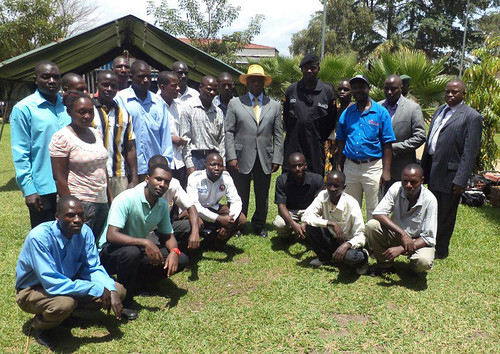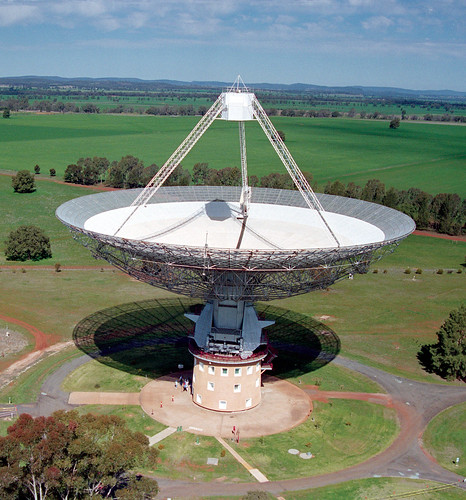FCC proposes Ku-band for mobile air-to-ground services; is seeking comment on whether to license the band on one nationwide 500 MHz band or two nationwide 250 MHz blocks.
[Satellite Today – ?08/01/2013]
Sky Perfect JSAT enters into agreement with Space Systems/Loral for construction of its new JCSAT 14 satellite.
[Satellite Today – ?08/01/2013]

U.S. Air Force considers turning over Florida spaceport to a commercial operator that would be overseen the the FAA.
[Space News – 07/19/2013]
U.S. Navy’s second MUOS satellite launched aboard United Launch Alliance Atlas V from Cape Canaveral.
[NASA spaceflight.com – 07/19/2013]
Orders for three satellites end nine-month dry spell for Orbital Sciences.
[Space News – 07/19/2013]
Canadian government’s Earth observation satellite Radarsat-1 served for 17 years – 2 more than the design life.
[SatNews – 07/19/2013]
Two satellites to be launched in coming weeks, one by NASA and one by the ESA, will allow data to be transferred over massive distances using lasers.
[The Telegrapvh – 07/18/2013]
Astrium prepares most sophisticated commercial communications satellite ever built, Alphasat, for July 25 launch aboard Ariane 5 launcher.
[SatNews – 07/18/2013]
NASA will try to fix planet-hunting Kepler space telescope after it loses its second of four momentum wheels.
[R&D Magazine – 07/18/2013]
Space Systems/Loral announces it has contracted with undisclosed customer to provide a multi-mission satellite to be used for telecommunications, television broadcast and other services such as distance learning.
[Herald online – 07/18/2013]
Final payload integration underway for Arianespace’s next heavy-lift flight, with the INSAT-3D weather satellite now integrated atop the Ariane 5 launcher.
[Satellite Evolution Group – 07/18/2013]
Roscomsos blames botched sensor installation for July 2 failure of Russia’s Proton rocket seconds after liftoff.
[Space News – 07/18/2013]

One of European Space Agency’s smallest satellites, Proba-2, captured image of Typhoon Soulik as it approached Taiwan July 12.
[SatNews – 07/18/2013]
Navy’s plans to launch second MUOS satellite proceed despite lack of terminals to use it.
[Nextgov – 07/17/2013]
Satmex enters into agreement with Boeing Satellite Systems International for design, construction and delivery of Satmex 9.
[UPI – 07/17/2013]
According to Roscosmos, wayward Russian military satellite completely burned up in the atmosphere and did not crash in northwestern China.
[Space News – 07/17/2013]

Spidersat to supply custom built satellite network to BIA in Africa.
[Satellite Spotlight – 07/17/2013]
iDirect moves Canadian office to the nation’s capital, strengthening its commitment to the Canadian satellite communications market.
[SatNews – 07/17/2013]
Experts: No amount of global outrage over secret U.S. surveillance powers would cause Britain, Canada, Australia and New Zealand to ditch the “Five Eyes” spying alliance.
[PHYS.ORG – 07/16/2013]
Azerspace satellite launches its full commercial operation.
[AZERNEWS – 07/16/2013]
RRSat has lowest price to book ration in the cable and satellite industry.
[FNN Online – 07/16/2013]
Universal Satellite Communications of Los Angeles selects French company ATME’s award-winning CM5000 encoders to upgrade SNG vehicles with latest encoding technology, including MPEG-4 4:2:2 10 bit features.
[Yahoo Finance – 07/16/2013]
Lockheed Martin completes antenna assemblies for first of eight GPS III satellites that will replace aging craft currently in orbit.
[UPI – 07/15/2013]
Newtec is shaping the future of satellite communications with state-of-the-art products and scalable, integrated solutions for broadcast, broadband access, and backbone and trunking applications.
[SatNews – 07/15/2013]
New Iraqi satellite broadcast platform launched on ARABSAT Hot Spot satellite.
[SatNews – 07/15/2013]
Forecast International projects $58 billion commercial communications satellite market over next 10 years.
[Market Watch – 07/15/2013]
Growing RF market opportunities from defense sector expected to grow at a CAGR of 9 percent through 2017.
[Sacramento Bee – 07/15/2013]
Globecomm Systems gets combined infrastructure and services contract worth approximately $12.4 million from major U.S. Broadcaster.
[Fort Mill Times – 07/15/2013]
Despite cost and lack of infrastructure, RCS-Communications expands in South Sudan, contracting with O3b Networks for high-speed, low-latency capacity for the more than 300,000 people in the capital of Juba.
[CFO world – 07/15/2013]















